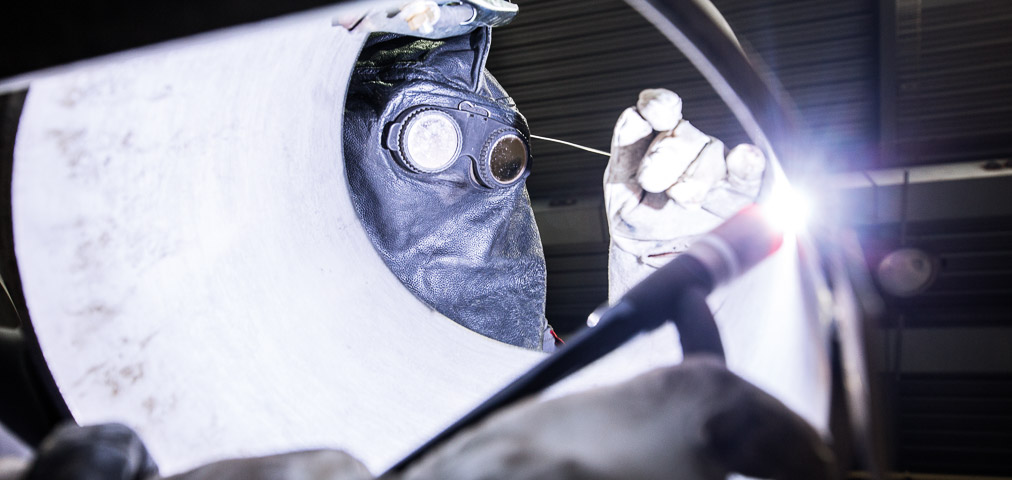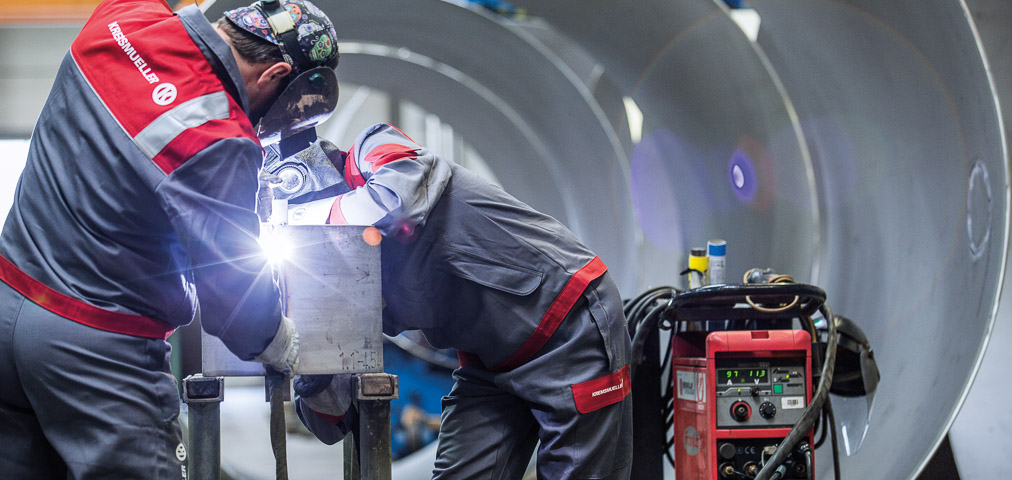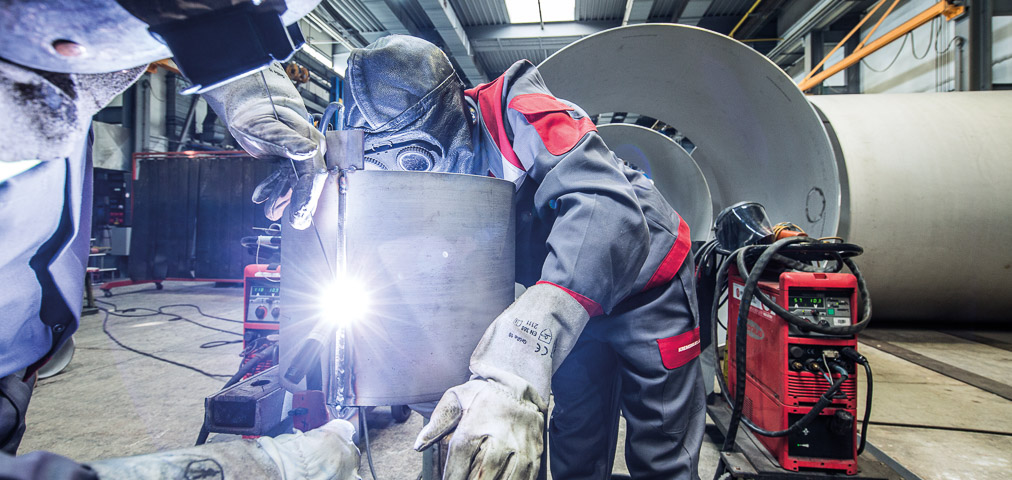Using Knocking Signals for a Perfect Weld Seam
Tandem welding has existed for decades. Often neglected, the process has some impressive advantages, however.
Lately there has been a lot of toing and froing among film teams in Steinhaus. While the filmmakers were often present in the factory halls for promotional films for “United Skills of Kremsmueller”, Fronius also recently visited the apparatus manufacturing facility in Steinhaus. The renowned welding machine manufacturer collects film, photo and text material from customers for user reports. And there really is plenty of material since welding work on unique components with challenging materials is one of Kremsmüller’s most important core competencies. The focus was on simultaneous TIG double-sided welding ? also known as TIG tandem welding.
“This process is mainly used by us for root welding in large vessel construction. It simply offers two great advantages ? it’s faster and the gas consumption is lower. Not only that, it also saves you time when processing the welding edges because a larger root can remain. But the two biggest factors are process reliability and the fact that you don’t have to grind the opposite side,” explains Gerhard Haminger, head of the Karl Kremsmüller Welding Academy.
But one thing is particularly important: the communication between the two tandem welders must be just right. Although headsets could also be used for communicating, welders continue to interact with each other via knocking or other hand signals when welding large components. The TIG tandem process only has its limitations when processing heat-sensitive materials.
“This process is mainly used by us for root welding in large vessel construction. It simply offers two great advantages ? it’s faster and the gas consumption is lower. Not only that, it also saves you time when processing the welding edges because a larger root can remain. But the two biggest factors are process reliability and the fact that you don’t have to grind the opposite side,” explains Gerhard Haminger, head of the Karl Kremsmüller Welding Academy.
But one thing is particularly important: the communication between the two tandem welders must be just right. Although headsets could also be used for communicating, welders continue to interact with each other via knocking or other hand signals when welding large components. The TIG tandem process only has its limitations when processing heat-sensitive materials.


